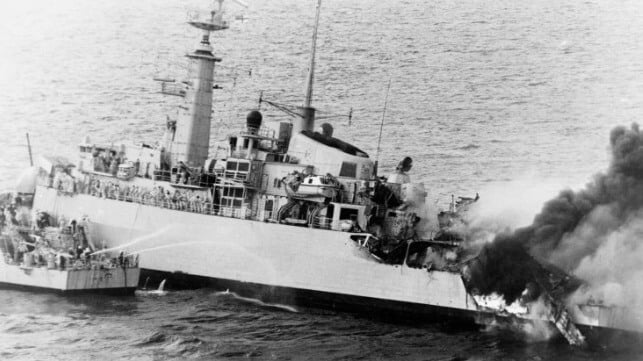All 5,100 Vessels Lost By the Royal Navy Can Now be Found in One Place

The Royal Navy has been in business since the 16th century, and over the years, it has lost its fair share of warships to accidents and enemy fire. Working with the Maritime Archaeology Sea Trust, it has compiled a full list of the thousands of vessels it has lost over the centuries, and it has released the database to the public for use in further research.
The new Royal Navy Loss List covers about 5,100 warships and fleet auxiliaries lost in Britain's naval service since 1512. It is limited to the Royal Navy's own vessels - not Royal Air Force, Army, Coastguard and merchant vessels which may have had Royal Navy crewmembers. It excludes ships captured by the enemy, lost in the service of other navies or converted to merchant vessels after their naval service.
Created by the Trust in 2011, the list was originally intended to help legal and conservation experts protect Royal Navy wrecks around the globe. Its authors gradually realized that it would be of great interest to the general public and to other historians, and they have now made it accessible to all.
The database is searchable by a ship’s name, class, and tonnage. More specific queries - like vessels lost in French waters over the past 500 years (760) or the number of ships lost on D-Day (416) - are also possible.
The database draws on official records, reference works, memoirs and eyewitness accounts. Archaeological reports and diver accounts were used to verify information on the survival of vessel remains.
Even then, said Giles Richardson, the Trust's senior archaeologist, the causes of many losses remains a mystery. More than half the ships lost in World War 2 are classified ‘unknown – lost in action’ due to lack of information. Many of these are landing craft and other small vessels lost in major operations, including Dunkirk, Operation Torch and Operation Overlord: official loss reports were only organized months after the fact, and any eyewitnesses had long since moved on to other wartime duties.
“Delving into contemporary accounts reveals craft officially recorded as simply as ‘lost’ on the Normandy beaches suffered a wide variety of fates, including storm damage, mechanical breakdown and collision," said Richardson.
The statistics reveal the effects of changing naval technology. Until the turn of the 20th Century, accidental shipwrecks - not battles - were responsible for the vast majority of losses. That reversed sharply after 1900: conflict accounts for three quarters of all Royal Navy ships sunk since 1900.
Mines destroyed one in every four Royal Navy ships sunk in both of the World Wars, a sign of the effectiveness of simple mine warfare. The impact of air power can be seen in the difference in losses between WWI and WWII: while just three percent of the Royal Navy ships lost in the First World War fell victim to enemy aircraft, air power accounted for nearly one third of all the service's losses in the Second World War.

that matters most
Get the latest maritime news delivered to your inbox daily.
“The RN Loss List is a vital tool to begin to understand, research and manage these 5,100 wreck sites before they are lost forever,” said the head of the National Museum of the Royal Navy, Professor Dominic Tweddle. “The United Kingdom has a huge, rich and astoundingly diverse underwater heritage from Bronze Age boats to World War 2 wrecks – and it is a heritage which is spread around the globe . . . It is vital that these myriad wrecks are treated as seriously as archaeological sites on land and this fantastic loss list compiled by MAST represents a huge step forward.”
The Loss List may be visited and searched at: https://thisismast.org/research/royal-navy-loss-list-search.html
